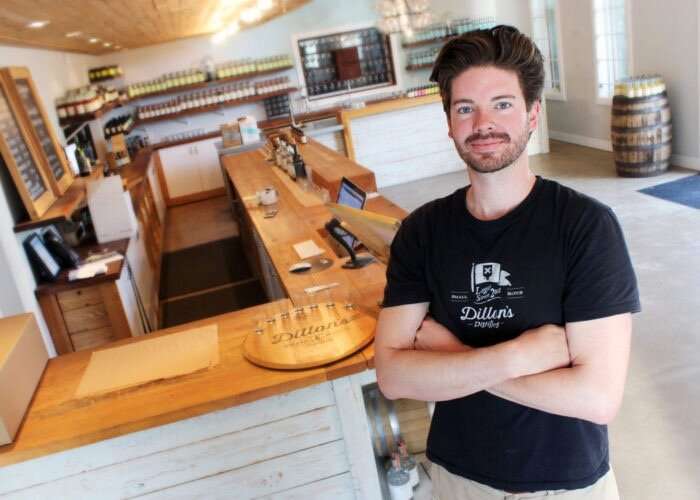Western researchers are exploring how many manufacturers in the province have converted production in the bigger battle against COVID-19 and how they pivoted so quickly – all toward constructing a ‘playbook’ to help build resilience in the future. Credit: University of Western Ontario
Some Ontario beer companies are pumping out pallets full of disinfectant. High-end clothing companies are stitching hospital gowns. An airbag factory has retooled to produce surgical scrubwear.
How many manufacturers in the province have converted production in the bigger battle against COVID-19, and how have they managed to pivot so quickly? Those are the key questions Western researchers hope to answer as they conduct an inventory of Ontario manufacturers dedicating at least part of their production capacity to new processes and products.
Professor Johanna Weststar and two Ph.D. students are using Mitacs industry partnerships to examine this new manufacturing roadmap.
"We're trying to track this ecosystem that has evolved and is evolving into a new reality. Manufacturers have responded incredibly quickly—many before they were asked by government," said Weststar, who specializes in organizational management, industrial relations and human resources.
Her team will be making note of who these nimble companies are—the database so far includes more than 160 such manufacturers in Ontario—and 'triangulating' those details with the timing and specifics of federal, provincial and municipal policy announcements.
From there, researchers will provide a detailed analysis of the processes and practices of companies' fast pivots; assess what skills, resources and supply chains they had, or needed but didn't have; and make the Ontarians and investors aware of industries' strengths and job options.
"Our primary task in this moment is just to get a handle on everything that's going on," Weststar said, describing it as assembling a 'playbook' to help build resilience in the future. "We've got a lot of pieces of the puzzle that we're putting together."
In fewer than two weeks, Geoff Dillon, BSc’10 (Biology and Economics), and his team transitioned Dillon’s Small Batch Distillers of Beamsville, Ont., from producing vodka and gin to hand sanitizer for front-line workers in the battle against the COVID-19 pandemic. Credit: University of Western Ontario
The work is taking place in partnership with the Trillium Network for Advanced Manufacturing, a non-profit organization dedicated to raising the profile and capacity of Ontario manufacturing.
Trillium managing director Brendan Sweeney said this will build on Ontario's strength in high-value, technical production, with expertise in engineering, transportation logistics and information-and-communications technology.
"We can learn from manufacturers about what their new normal and next normal is, and how COVID impacted their transition—was there opportunity in that crisis?" he said.
In the past month, there are a number of companies in London, in Ontario, in Canada, that people have never heard of before, and now they're in the news, because of their innovative ways of tackling the pandemic.
"Now we are starting to see again the importance of manufacturers, agri-food and health care. We're starting to really see who is playing an important role in the function of our society. What we want to do is see who these manufacturers are and how they pivoted—whether its moving from beer to hand sanitizers, or from auto parts to ventilators.
"As much as it's a challenging time, it's also a fascinating time to do this work. Frankly, I'm glad we're doing it at Western because the student capabilities here for this type of work exceed those at a lot of other universities," he said.
While most Mitacs program investments are in industrial workplaces, this one is unique, Sweeney said, in that it draws in organizational psychology, economics and policy decisions.
The insights they generate will be shared with regional economic development offices, industry associations and government agencies and departments across Ontario. It will also be used to connect companies into Ontario supply chains that they did not previously have.
Provided by University of Western Ontario

























